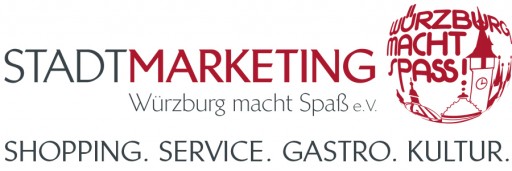
EINKAUFSSTRASSEN
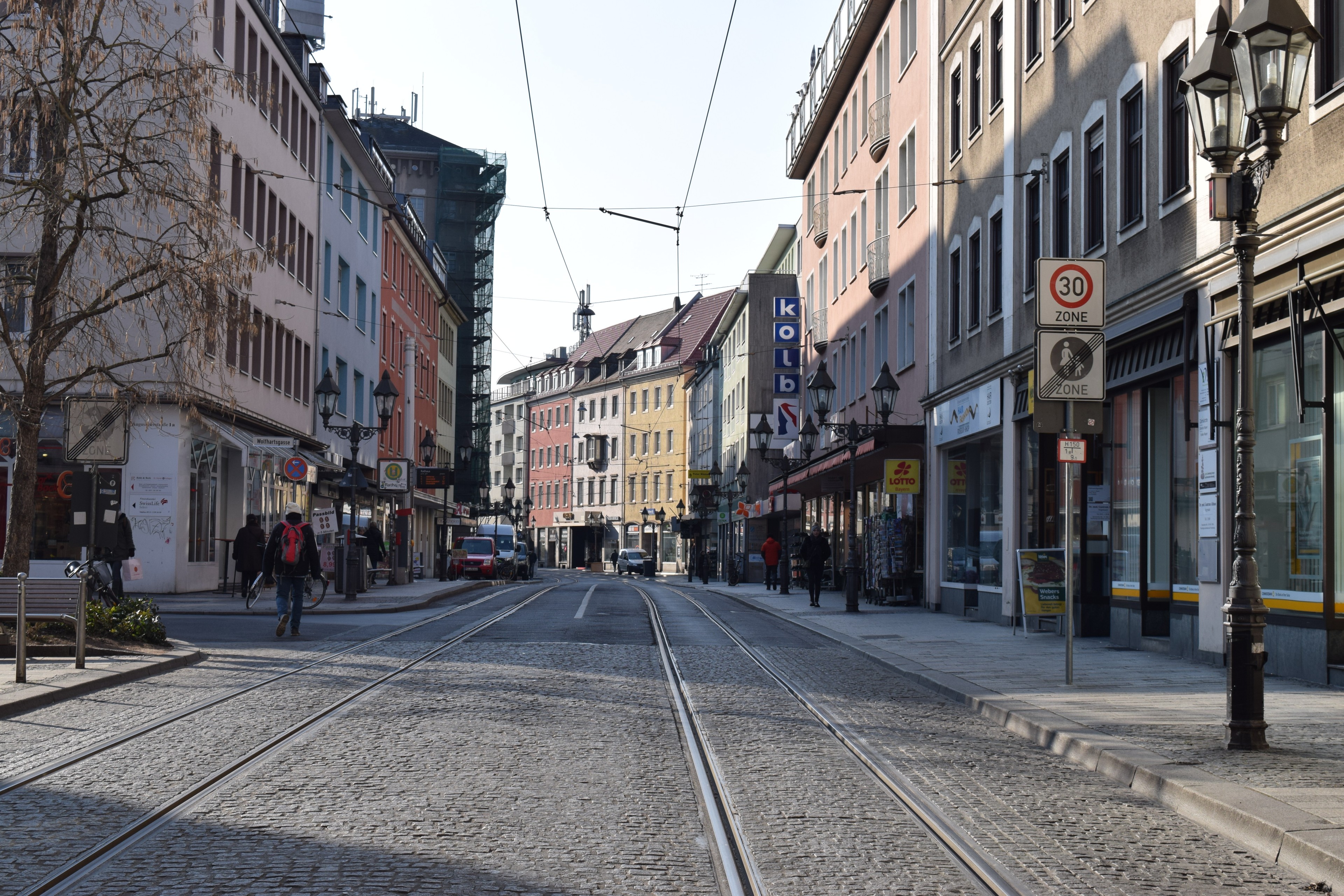
Augustinerstraße

Nach einem früher hier, an Stelle der Polizeiinspektion, befindlichen Augustinerkloster benannt, bietet diese Straße heute Mode und Schuhe, Spielwaren und Hobbyshops, Cafés und Clubs und ist leicht per Straßenbahn erreichbar: Ein Bummel lohnt sich immer!

Named after an Augustinian monastery which was located here in the past - now replaced by the police station - this street offers fashion and shoes, toys and leisure time shops, cafes and clubs and can easily be reached by tram. It is surely worth a stroll!
Domstraße

Schon im Mittelalter war die heutige Domstraße die Hauptschlagader der Stadt. Flaniert man heute zwischen Dom, Rathaus, Vierröhrenbrunnen und der Alten Mainbrücke findet man alles, was das Herz begehrt: Bekleidung, Lebensmittel, Multimedia, Banken, Shops für Wellness, Genuss und Gesundheit. Natürlich laden auch zahlreiche Cafès und Gastronomien zum Verweilen ein. Wer von hier aus bequem per Straßenbahn den Bummel fortsetzen möchte, kann am Sternplatz direkt im Kundenzentrum der WVV alle nötigen Infos einholen.

As early as in medieval times today’s “Domstraße” was the city’s major arterial street. In the area between Würzburg cathedral, the town-hall, the “Vierröhrenbrunnen” (a well) and the old Main Bridge, nowadays you will find almost everything you’re looking for: clothes, food, multimedia, banks as well as shops for wellness, beauty and health. Of course the numerous cafes and restaurants also invite you to stay. If you’d like to continue your shopping comfortably by tram, you will find all the necessary information at the costumer centre of WVV at “Sternplatz”.
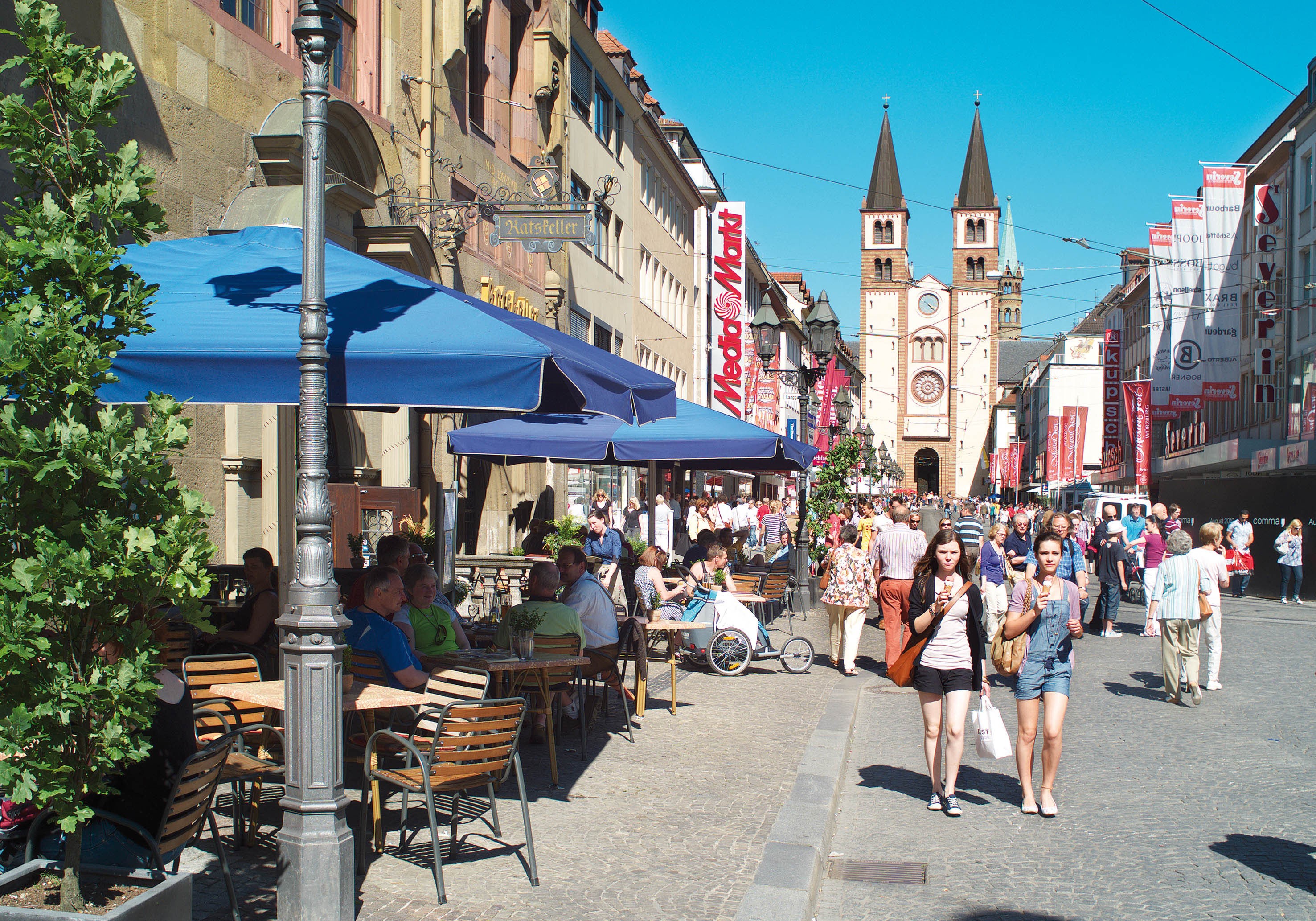
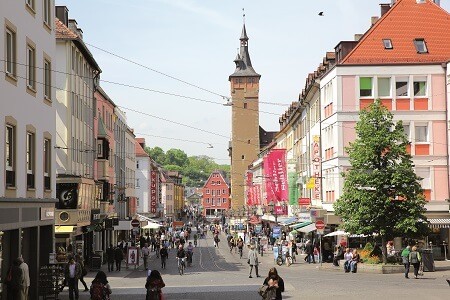


Eichhornstraße

Eine der ältesten Straßen Würzburgs und die jüngste Bereicherung der Fußgängerzone. Seit dem 19. Jh. wird die Straße nach den ehemaligen Adelshöfen „Zum Roten Eichhorn“ und „Zum Schwarzen Eichhorn“ benannt. Ein Bummel durch die exquisiten und liebevoll eingerichteten Geschäfte lohnt immer. In den zum großen Teil inhabergeführten Geschäften haben Qualität, Freundlichkeit und persönliche Beratung höchste Priorität, was der Straße ihr besonderes Flair verleiht.

One of the oldest streets in Würzburg and the youngest gain to the pedestrian zone. Since the 19th century the street is called after the former noble estates “Zum Roten Eichhorn” and “Zum Schwarzen Eichhorn”. Maybe you will find the memorial plaque with the two squirrels that still exists. A stroll through the small, exquisite and lovely-equipped shops is always worth it. Quality, kindness and personal advice have the highest priority in the mostly owner-managed shops. That gives the street its special atmosphere.
Juliuspromenade

Diese prächtige Einkaufsstraße wird von der beeindruckenden Architektur des Juliusspitals dominiert, das noch heute als Krankenhaus und Seniorenstift dient. Fürstbischof Julius Echter von Mespelbrunn stiftete im 16. Jh. das Kranken-und Armenhaus. Zur Unterhaltung der Anlage überschrieb er dem Spital u. a. Weinberge. So ist das Weingut Juliusspital heute das zweitgrößte in Deutschland und die Würzburger freut es, mit dem Genuss ihres Weins karitative Unterstützung zu leisten. Auf der langen Allee, vom Alten Kranen bis zum Barbarossaplatz, findet man ein ebenso buntes Angebot an Läden für Jung und Alt wie auch viele Lokale mit regionalen und internationalen Speisen und erfrischenden Getränken.

This magnificent shopping street is dominated by the impressing architecture of the “Juliusspital”, which still serves as a hospital and home for the elderly. Prince Bishop Julius Echter von Mespelbrunn endowed the hospital and the poorhouse in the 16th Century and transferred vineyards and estates as sustentation. Nowadays the “Weingut Juliusspital” is the second biggest winery in Germany, which pleases the locals to accomplish charitable support with a degustation. On the long boulevard starting from “Alter Kranen” (old crane) to the “Barbarossaplatz”, you can find a colourful variety of shops for every age and a lot of restaurants with regional and international dishes and refreshing drinks.



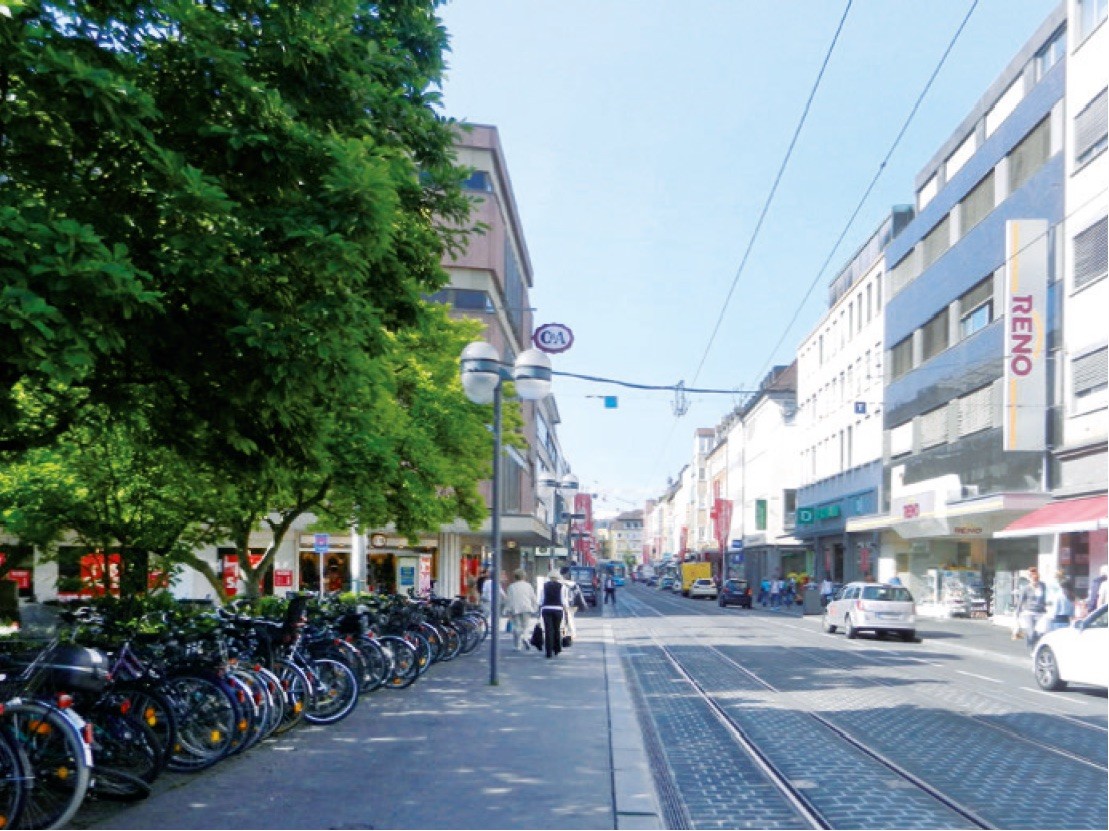
Kaiserstraße

Die Kaiserstraße ist das „Tor zur Innenstadt“, in der schon 1899 die erste elektrische Straßenbahnlinie Würzburgs verkehrte. Schon damals gehörte die Kaiserstraße zu den ersten Geschäftsstraßen in Würzburg und war ein wichtiges Bindeglied zwischen dem heutigen Hauptbahnhof und der Innenstadt. Vom Bahnhof aus kommend, schnuppern bereits hier die Besucher Würzburgs die Vielseitigkeit dieser Stadt. In der Kaiserstraße wechseln sich interessante inhabergeführte Geschäfte mit bekannten Filialisten, serviceorientierte Dienstleister mit Fashionshops und traditionelle Cafés mit pfiffigen Imbissbuden lebendig ab.

The “Kaiserstraße” is the “gateway to downtown” and known for the cities first electric tramline in 1899. Since then the “Kaiserstraße” was one of the first shopping streets in Würzburg and an important link between today’s main station and the city centre. Arriving at the railway station, the visitors grab a first scent of the cities variety. The diversified range of shops and goods is interesting: owner-run shops, fashion brands and retailers alternate with smart snack bars and traditional cafés.
Karmelitenstraße

Ob man ein Taxi nehmen oder das Fahrrad in der Garage verstauen möchte, ob man Pasta und Tortillas essen oder ein Guinness trinken will, ob man auf der Suche nach Dekoartikeln, Mode und Antiquitäten ist, Lust hat nach CDs und Musikinstrumenten zu stöbern oder sich ein Tattoo stechen lassen möchte: In der Karmelitenstraße ist alles möglich!

No matter if you want to catch a cab or store your bike in the garage, if you want to eat pasta and tortillas or drink a Guinness, if you are looking for decorations, fashion, antiques, CDs and musical instruments or get a tattoo: anything is possible in the Karmelitenstraße.
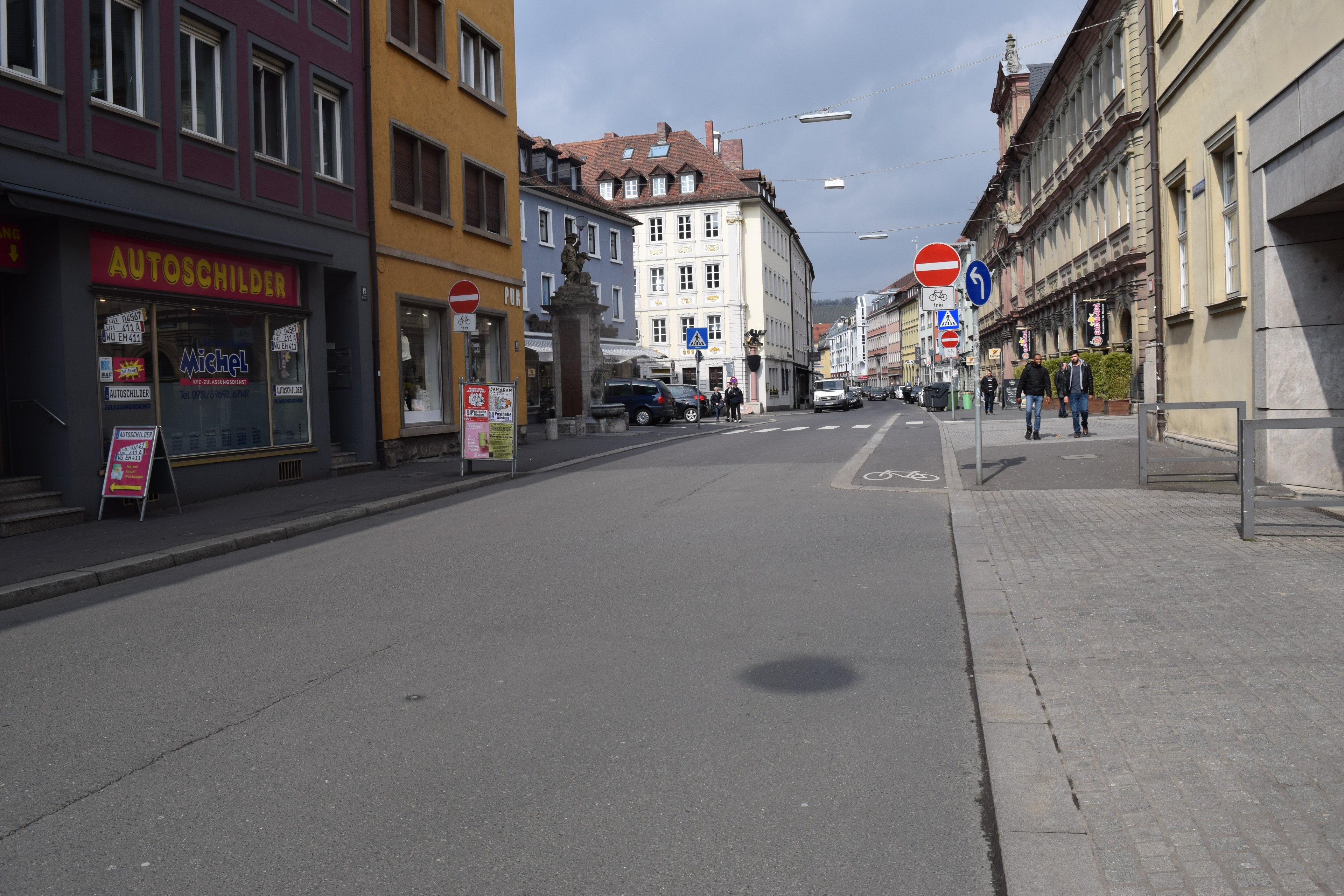

Mainviertel

Das Mainviertel hat als älteste Ansiedlungen im Würzburger Stadtgebiet vor allem kulturell einiges zu bieten. Über unterschiedliche Einrichtungen, Kirchen bis hin zu Museen und Galerien ist hier alles vertreten, was das Kulturherz höherschlagen lässt.

The Main-quarter is the oldest settlement in Würzburg. It mainly offers cultural activity. Here you will find several institutions, churches, museums and galleries.
Neubaustraße│Peterplatz│Münzstraße

Neben zahlreichen historischen Bauwerken im Barockstil, findet man hier vor allem Schulen, Hotels, Restaurants & Cafés. Kulinarisch ist vom leckeren Burger über italienische Pizza und dem klassischen Auflauf, bis hin zum von Michelin und Gault-Millau prämierten Gourmet-Restaurant, “KUNO 1408”, alles geboten. Und wer schon immer mal etwas zur Geschichte Würzburgs wissen wollte, findet im Stadtarchiv sicher Antworten.

Besides the historical baroque buildings many schools, hotels, restaurants and cafes are located in this area. Your taste buds will be delighted by delicious burgers, Italian pizza, classic casserole and the high-class Guide Michelin and Gault-Millau awarded gourmet restaurant “KUNO 1408”. And for your historical questions about the city, you will find the answers in the city archives.
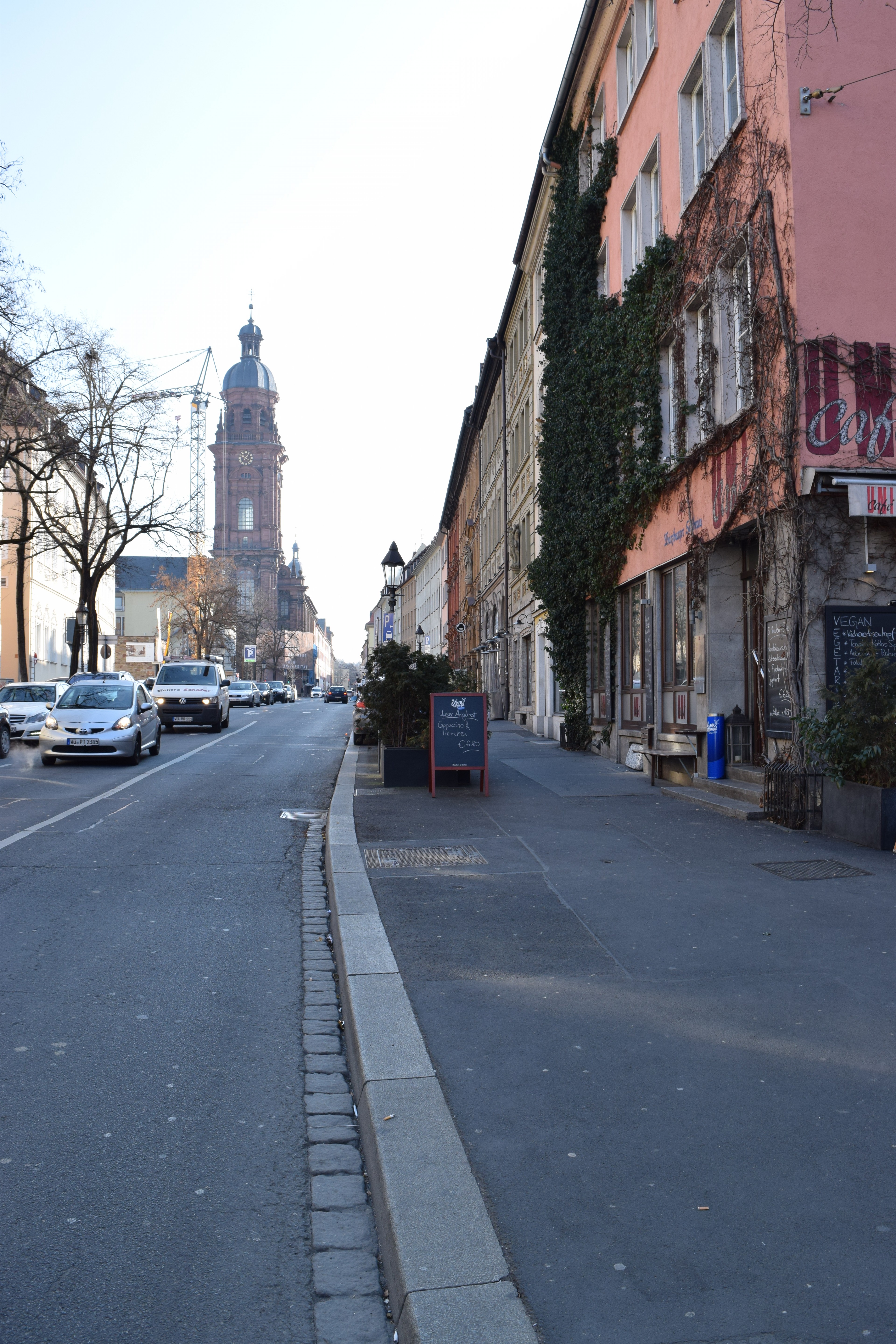
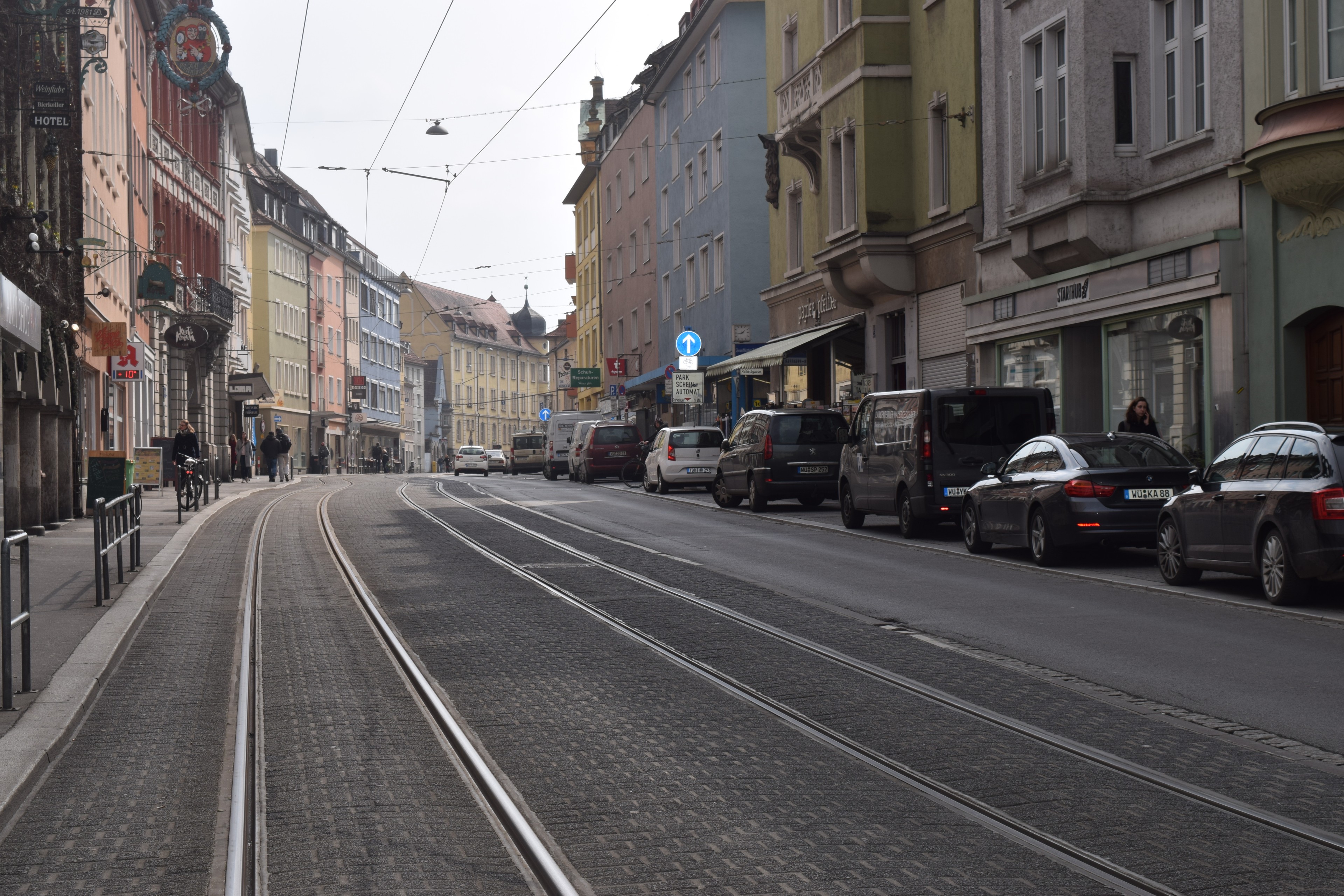
Sanderstraße

Würzburgs „Kneipenmeile“ hat neben Bars, Cafés und Imbissbuden auch Bücher, CDs, Papier- und Kunstläden zu bieten und ist nicht nur bei den Studenten sehr beliebt, sondern zur Zeit der WM oder EM auch die Adresse Nummer 1 für Fußballfans: Hier steppt der Bär in Würzburg!

The so called “bar district” of Würzburg has more to offer than bars, cafes and snack bars. You can also find books, CDs, stationary supplies and art. The street is not only popular amongst students, but during the Football World Cup and the European Football Championship it is the main address for football fans. This is where the party gets started in Würzburg!
Schönbornstraße│Kürschnerhof

Die Schönbornstraße ist die Haupteinkaufsstraße und führt vom Dom, am Marktplatz vorbei, zum Juliusspital. Die Straße wurde nach dem Adelsgeschlecht der Grafen von Schönborn benannt. So war es Fürstbischof Johann Philipp Franz von Schönborn, der die Residenz in Auftrag gab. Er war es auch, der die ursprünglich schmale Gasse zur heute großzügig angelegten Straße hat ausbauen lassen. Sind Sie auf der Suche nach Mode, Multimedia, Büchern, Souvenirs oder Gaumenfreuden, dann sind Sie hier richtig.

The “Schönbornstraße” is the main shopping street and leads from the Würzburg Cathedral to the “Juliusspital”. The street was named after the noble family of the Prince Bishops of Schönborn, who were well known for their passion to build during baroque period. It was Johann Philipp Franz of Schönborn who commissioned the Residence. It was also him who issued instructions to expand the former alleyway to today’s spacious street. If you are looking for fashion, multimedia, books, souvenirs or gourmet food, this is your place to be.

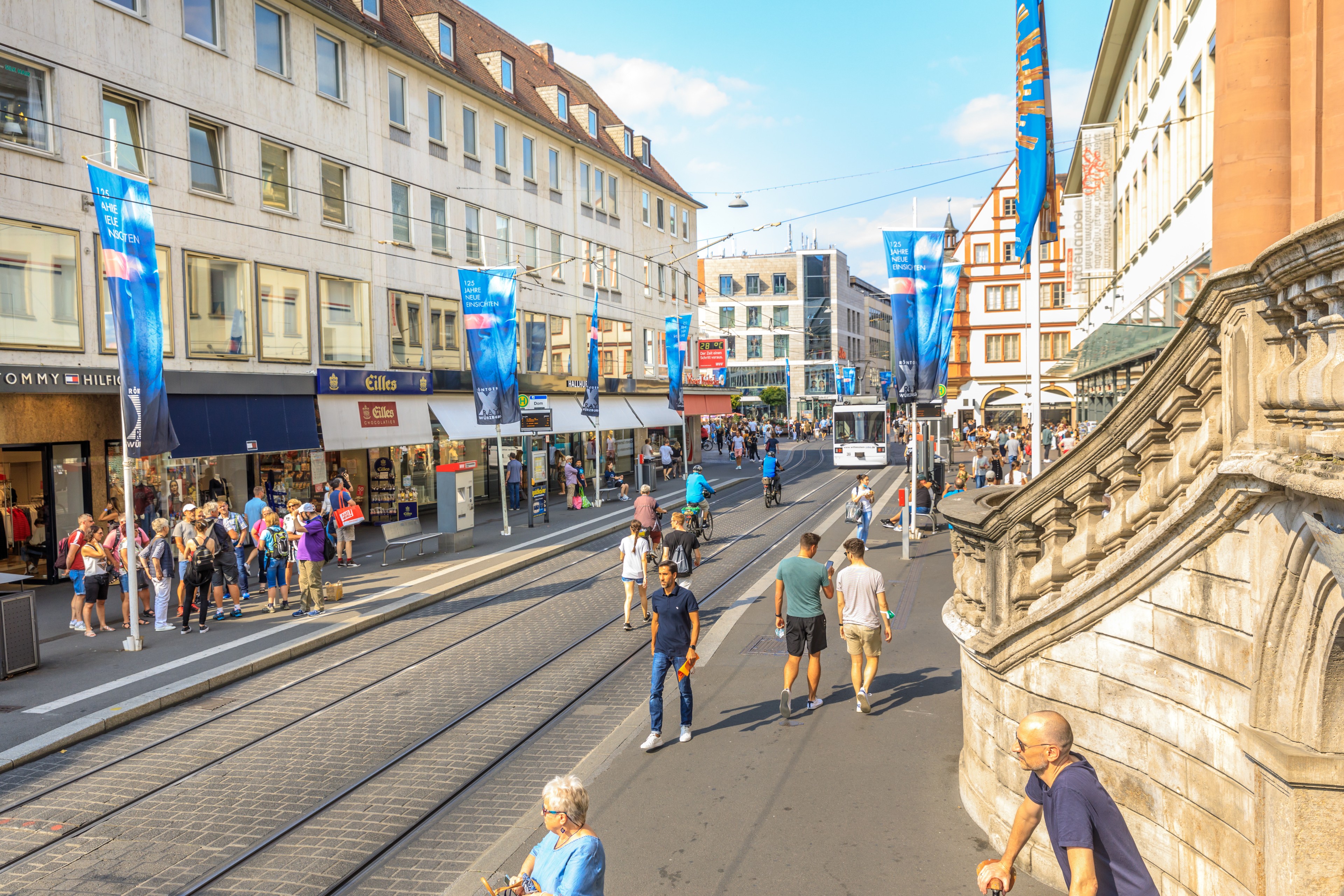

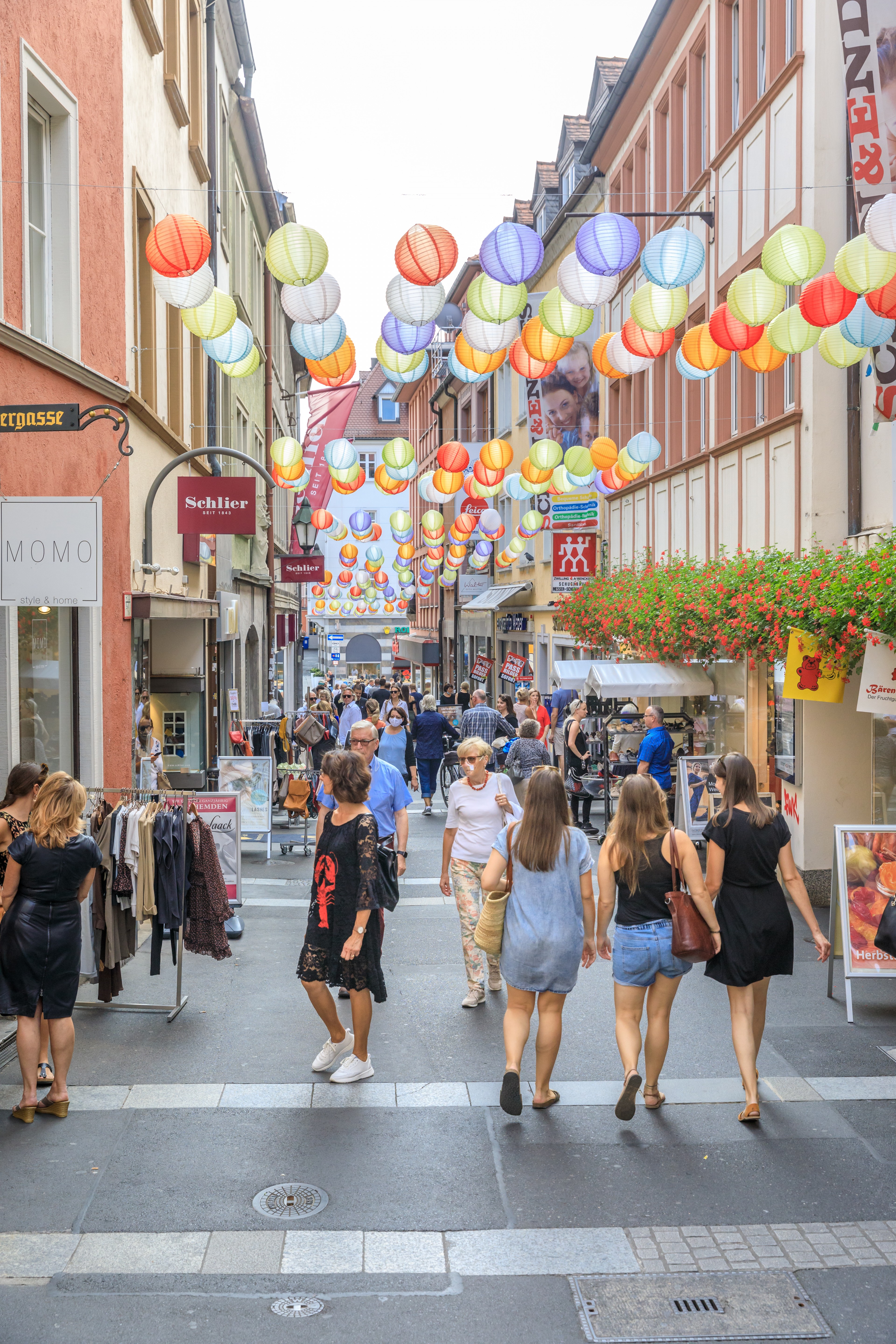
Schustergasse

Die ehemalige „Judengasse“ war die Verbindung zwischen der früheren Marktstraße und dem Judenviertel und nachts mit einer Kette abgesperrt. Nach der Vertreibung der jüdischen Gemeinde siedelten sich hier vor allem Schuhmacher und -händler an, die der Gasse ihren Namen gaben. Heute finden Sie hier eine Auswahl an Fachgeschäften für Bekleidung, Geschenkideen, allerlei Nützliches und Praktisches. Besonderen Wert legen die Händler auf die Gestaltung der Schaufenster, was einen Besuch vor allem zur Oster- oder Weihnachtszeit sehr attraktiv macht. Spannend und heiter ist auch das Schustergassen-Oktoberfest.

The former Jewish alleyway was the connection between the former Market street and the Jewish quarter, and was locked by a chain at night. After the expulsion of the Jewish community a lot of shoemakers and shoe stores settled here, that’s how the alley got its recent name. Nowadays you will find a variety of specialised shops for clothing, gifts and all kinds of essentials. The retailers put great effort in their shop windows, a visit around Easter and Christmas is especially attractive. You might also like the cheerful Schustergassen-Oktoberfest.
Semmelstraße

Die Semmelstraße ist eine Einkaufsstraße mit Herz und zeichnet sich durch viele inhabergeführte Geschäfte aus, für die Beratung und Zufriedenheit des Kunden im Mittelpunkt stehen. Die nach den vielen früheren ansässigen Semelern (Weißbäckern) benannte Straße hat für jeden etwas zu bieten: Münzhandlung, Blumenladen, Sportgeschäfte, Mode, Kosmetik, Schmuck und Umstandsmode für die Damen. Für alle gibt es natürlich Bäckereien, Restaurants, internationale Imbissbuden, Bars und Hotels. Die Semmelstraße ist eine Straße mit Herz und die Ladenbesitzer freuen sich über zufriedene Kunden.

This street was named after the many “Semmeler” (bakers) who ran their business in the street. It surely offers something for everyone: coin shops, florists, male fashion for the gents, cosmetics, jewellery and maternity fashion for the ladies - and everyone enjoys the many bakeries, restaurants, sport shops, international snack bars, bars und hotels. The “Semmelstraße” is a shopping street with heart. Owners like to see their costumers contend and happy.

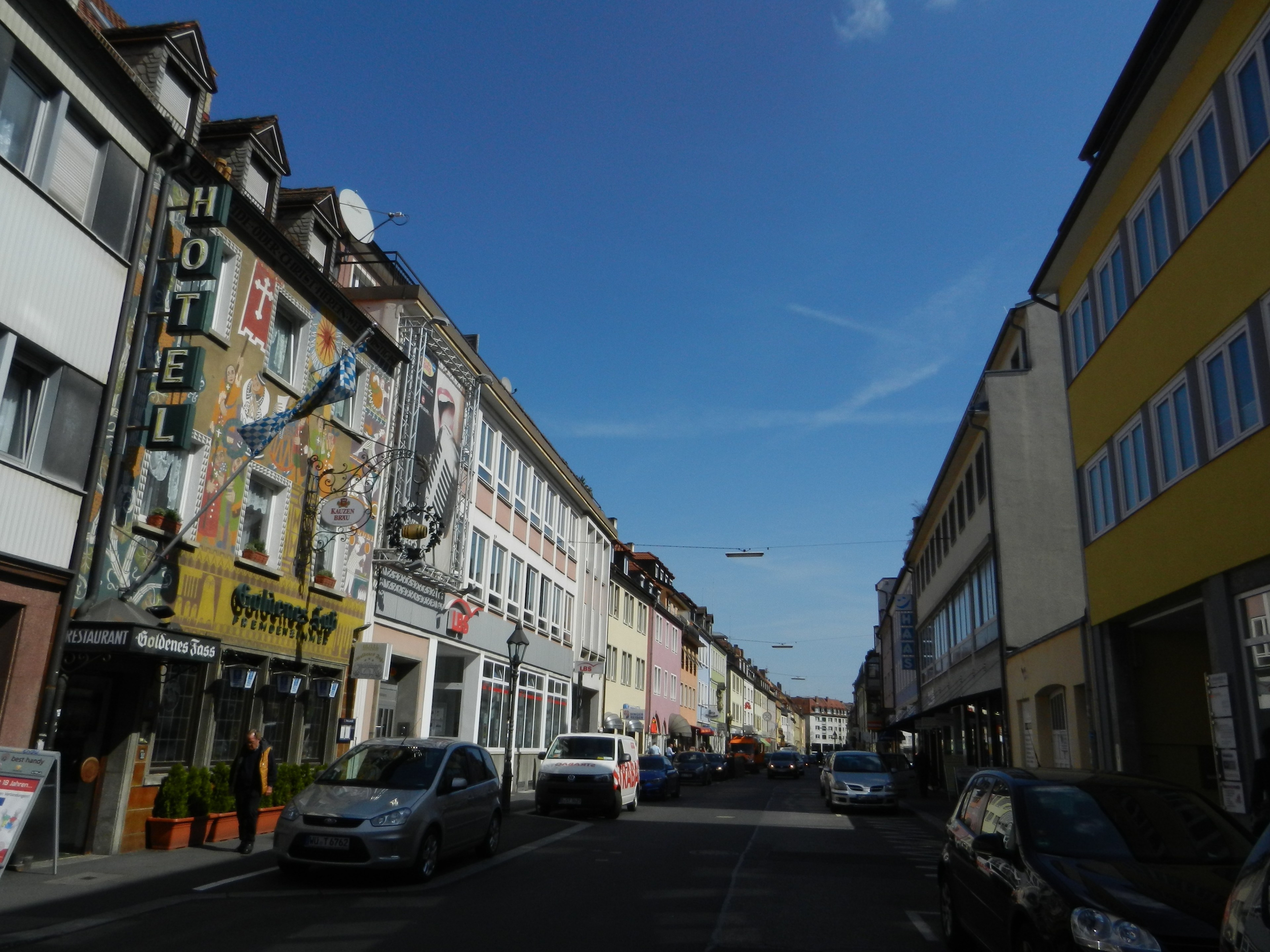

Spiegelstraße

Ob noch schnell einen Imbiss, Tabak oder die Zeitung holen oder doch in Ruhe nach Handys oder passenden Wohnartikeln suchen, exotische Kaffeegerüche einatmen oder im ehemaligen Gartenpavillon der Domherrenkurie beim Kerzenschein essen: hier finden Sie alles an einem Fleckchen.

This street caters to your every need, no matter if you want to grab a quick bite to eat, buy tobacco or get the newspaper. Or would you rather take your time and look for a cell phone or nice living accessories, breath in exotic coffee smells, or have a candle light dinner at the former grand pavilion. You can find everything, right here, in one spot!
Theaterstraße

Auf dem direkten Weg vom Bahnhof und Barbarossaplatz zur Residenz findet man nicht nur das Bürgerspital, das Mainfrankentheater und das Damenstift zur Heiligen Anna, sondern auch eine Vielzahl von überwiegend kleinen Läden, die von Fashion und Mode, Hobby und Reisen, Beauty und Wellness bis zu Antiquitäten und dem Feierabendeinkauf alles bieten, was man braucht. Ein großes Angebot an Gastronomie und Hotellerie vollenden die Vielfalt in der Theaterstraße.

On your direct route from the main station and the “Barbarossaplatz” to the Residence you will not only find the “Bürgerspital” (a famous wine estate), the “Mainfrankentheater” and the “Damenstift zur Heiligen Anna”, but also a variety of small shops that offer anything from fashion, stationery supplies, travel, beauty and wellness to antiques and grocery shops. A large range of catering trade and hotels complete the diversity of the “Theaterstraße”.



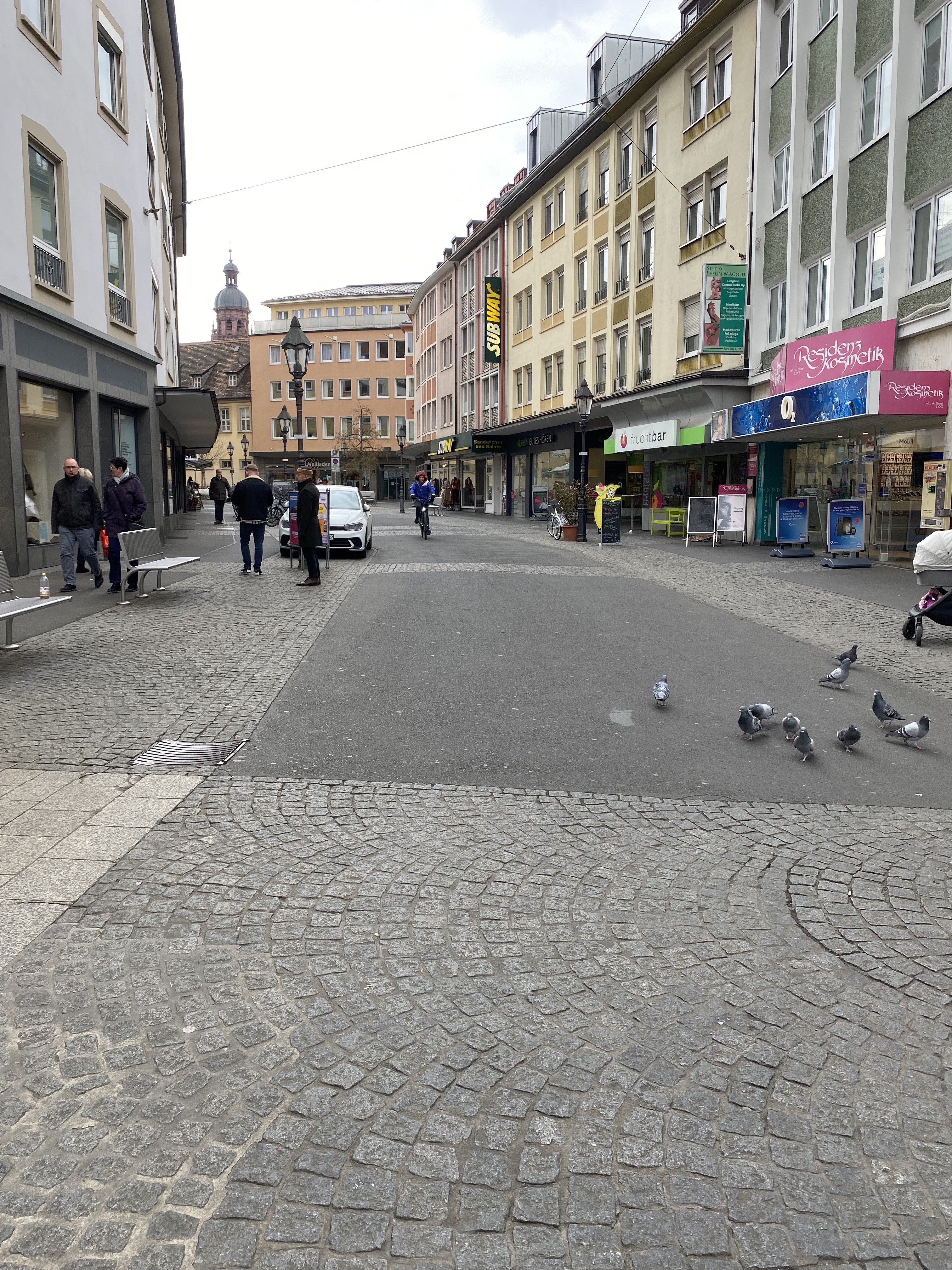
Plattnerstraße

Die seit dem 19. Jahrhundert so benannte Plattnerstraße, bietet zahlreiche Möglichkeiten um verschiedene Aktivitäten zu unternehmen. Der heutige Name stammt von den Plattnern, welche hier im Mittelalter ihre Werkstätten hatten. Während Familien ihre Einkäufe in den ansässigen Geschäften tätigen, gibt es für die Kinder die Möglichkeit, mit den „Streichelkatzen“ zu spielen: dabei handelt es sich um Katzen aus Stein, welche auf der Straße befestigt sind. Falls es mal schnell gehen muss oder sich der kleine Hunger meldet, gibt es vor Ort leckere Sandwiches zu essen oder exotische Smoothies zu probieren.

The Plattner Street, named since the 19th century, offers numerous opportunities to engage in various activities. The current name comes from the Plattners, who had their workshops here in the Middle Ages. While families do their shopping in the local stores, energetic children have the opportunity to play with "petting cats". These are cats made of stone, which are fixed on the street. If you're in a hurry or feeling a little peckish, there's also the option of eating sandwiches on side or trying exotic smoothies.
